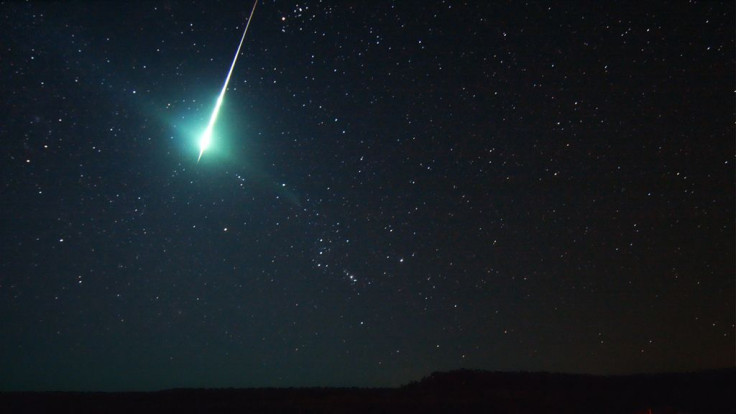Tiny Meteorite Holds Clues About The Building Blocks Of Life On Earth

KEY POINTS
- Scientists found a golf-ball sized meteorite, Asuka 12236, in Antarctica in 2012
- It turns out to be one of the most primitive CM meteorites to be studied to date
- The meteorite contains silicates possibly formed even before the sun
- Asuka 12235 provides clues as to the role of meteorites in bringing the building blocks of life to Earth
A team of researchers had a peek into the building blocks of life from the early solar system, thanks to a coal-black meteorite from Antarctica.
It was in 2012 when an international team of researchers on an expedition to Antarctica found meteorite Asuka 12236. Such meteorites were once part of much larger asteroids but were hit off during collisions some 4.5 billion years ago and traveled until they eventually reached Earth.
In Asuka 12236's case, even at just the size of a golf ball, it is actually one of the best-preserved of its kind to be discovered. It is so well-preserved that it contains silicate grains with compositions that suggest they were likely from the time before the sun even began to form, predating the solar system. Since these silicates can easily be destroyed by water, the fact that they are present in Asuka 12236 indicates minimal exposure to water.
The study, for which they crushed a tiny piece of the meteorite and analyzed its contents, showed that Asuka 12236 has an abundance of the amino acids that make up the proteins that power the life on Earth. They even found more amino acids in Asuka 12236 than in Paris meteorite, which was previously thought to be the best-preserved among the same class of meteorites.
"The amino acid concentrations of A‐12236 were double those previously measured in the CM2.7 Paris meteorite, consistent with A‐12236 being a highly primitive and unheated CM chondrite," the researchers wrote in their study published in the journal Meteoritics and Planetary Science.
The researchers found that the Asuka 12236 had more "left-handed" than "right-handed" amino acids. As NASA explains, all known life on Earth only uses left-handed amino acids to build proteins.
"The meteorites are telling us that there was an inherent bias toward left-handed amino acids before life even started," study lead and Goddard astrobiologist Daniel P. Glavin said in a NASA news release. "The big mystery is why?"
To find out, the researchers have been scouring meteorites to build a timeline of how the molecules ended up evolving, with Asuka 12236 being somewhere in the earlier stages. Since left-handed molecules typically need a lot of water to be processed, the ones in Asuka 12236 were well preserved given its lack of exposure to water.
This shows how the right conditions had to be met for the building blocks of life that reached Earth to flourish and power the beginnings of life.
"Asuka 12236 is showing us that there's this 'Goldilocks' thing going on," Glavin said. "You need some liquid water and heat to produce a variety of amino acids. But if you have too much, you can destroy them all."
The researchers are quite confident that Asuka 12236 is an untainted meteorite considering that the amino acids they found in it are free-floating rather than bound in proteins, something that would have happened if the amino acids were actually from Earth. But to be sure, the researchers are eager to examine samples that are completely untainted by Earth and, they will get this chance a few years from now when NASA's OSIRIS-REx spacecraft returns to Earth with samples from asteroid Bennu.
Earlier this month, the OSIRIS-REx mission successfully completed the final rehearsal for the Touch-And-Go event this coming October. The hope for the mission is to collect at least 60 grams of samples from asteroid Bennu. Since material from the asteroid is much like a "time capsule" from the early solar system, studying it could provide clues regarding the role that asteroids played in bringing the building blocks of life to Earth.
© Copyright IBTimes 2025. All rights reserved.






















